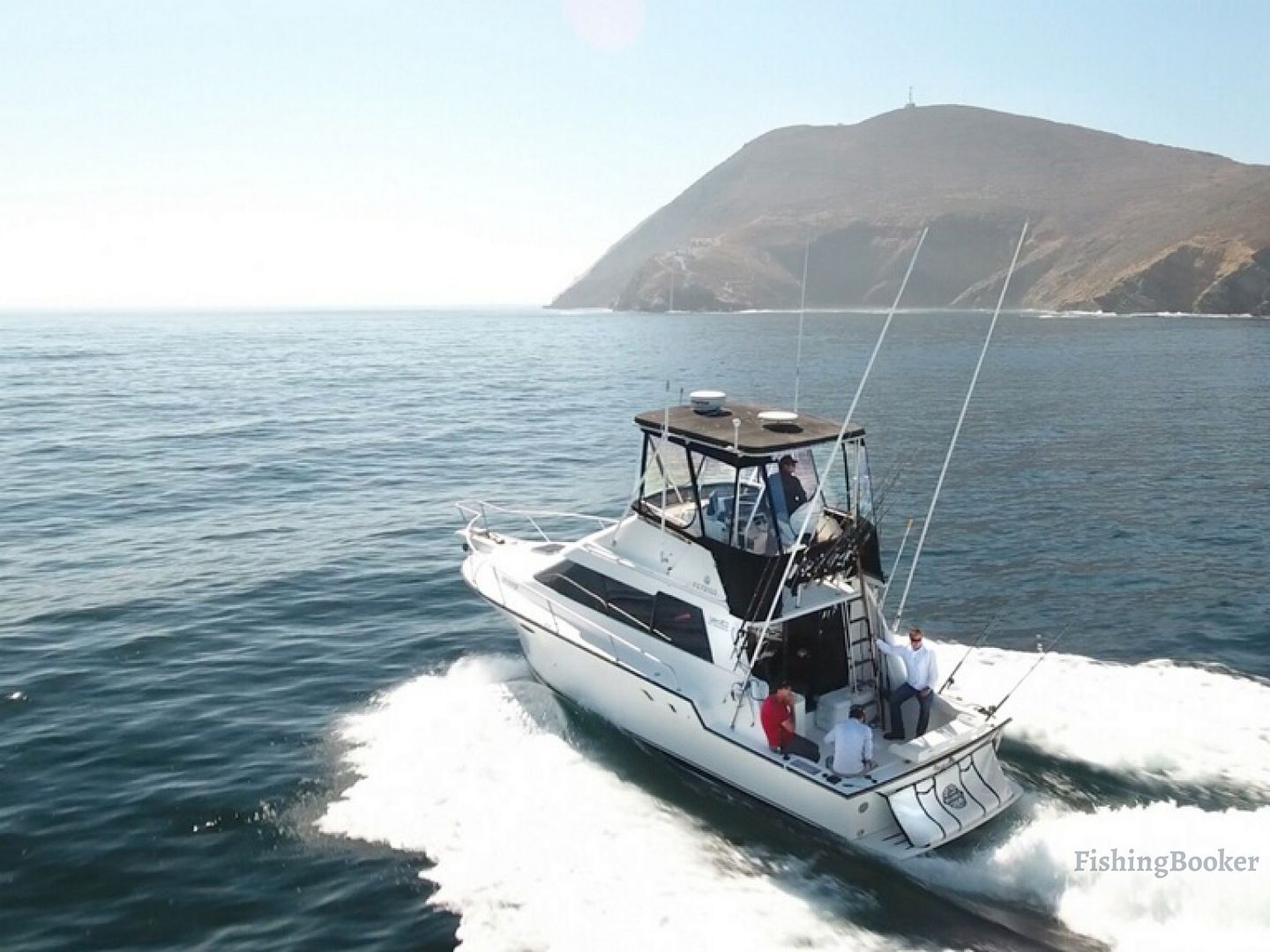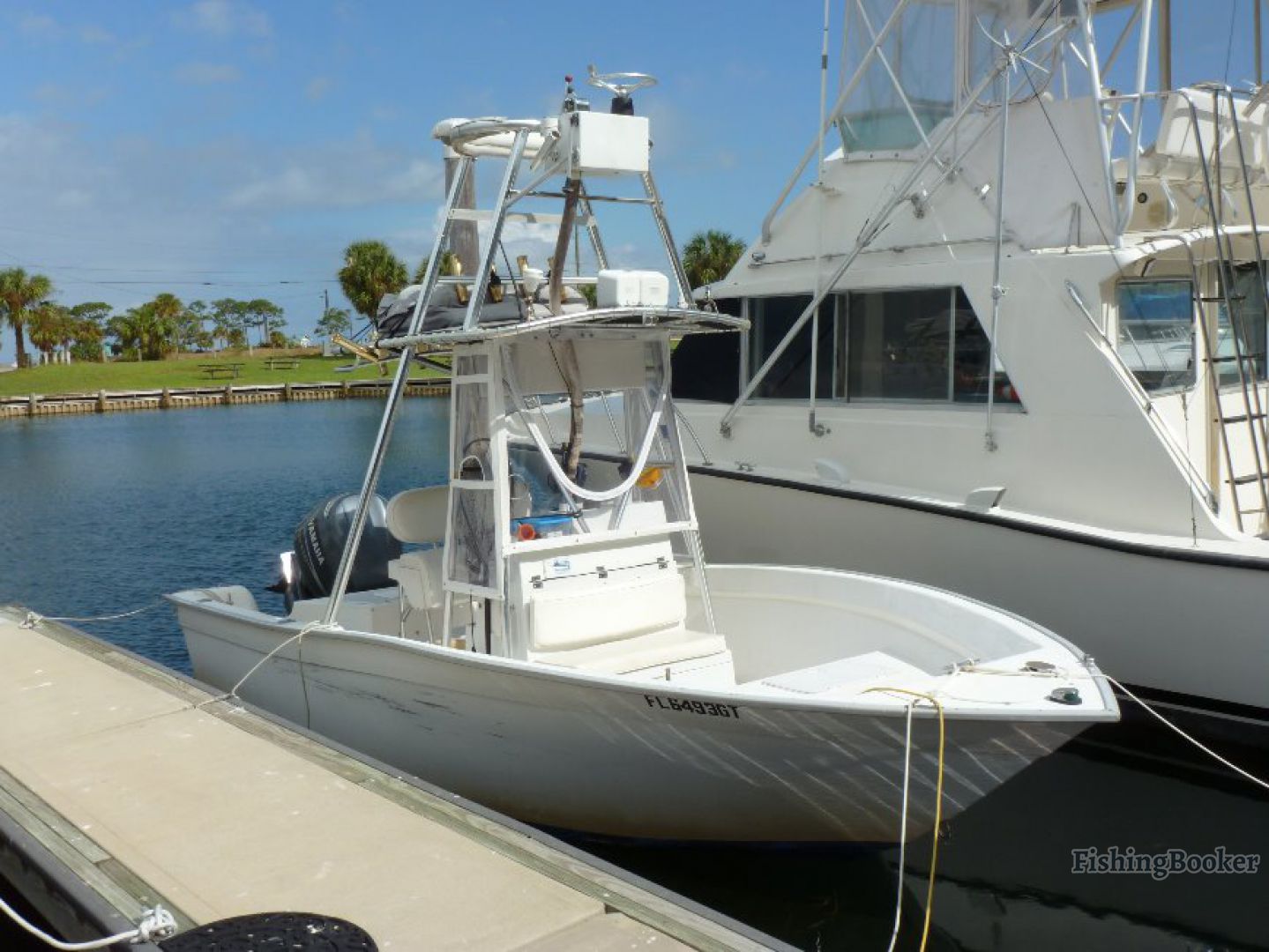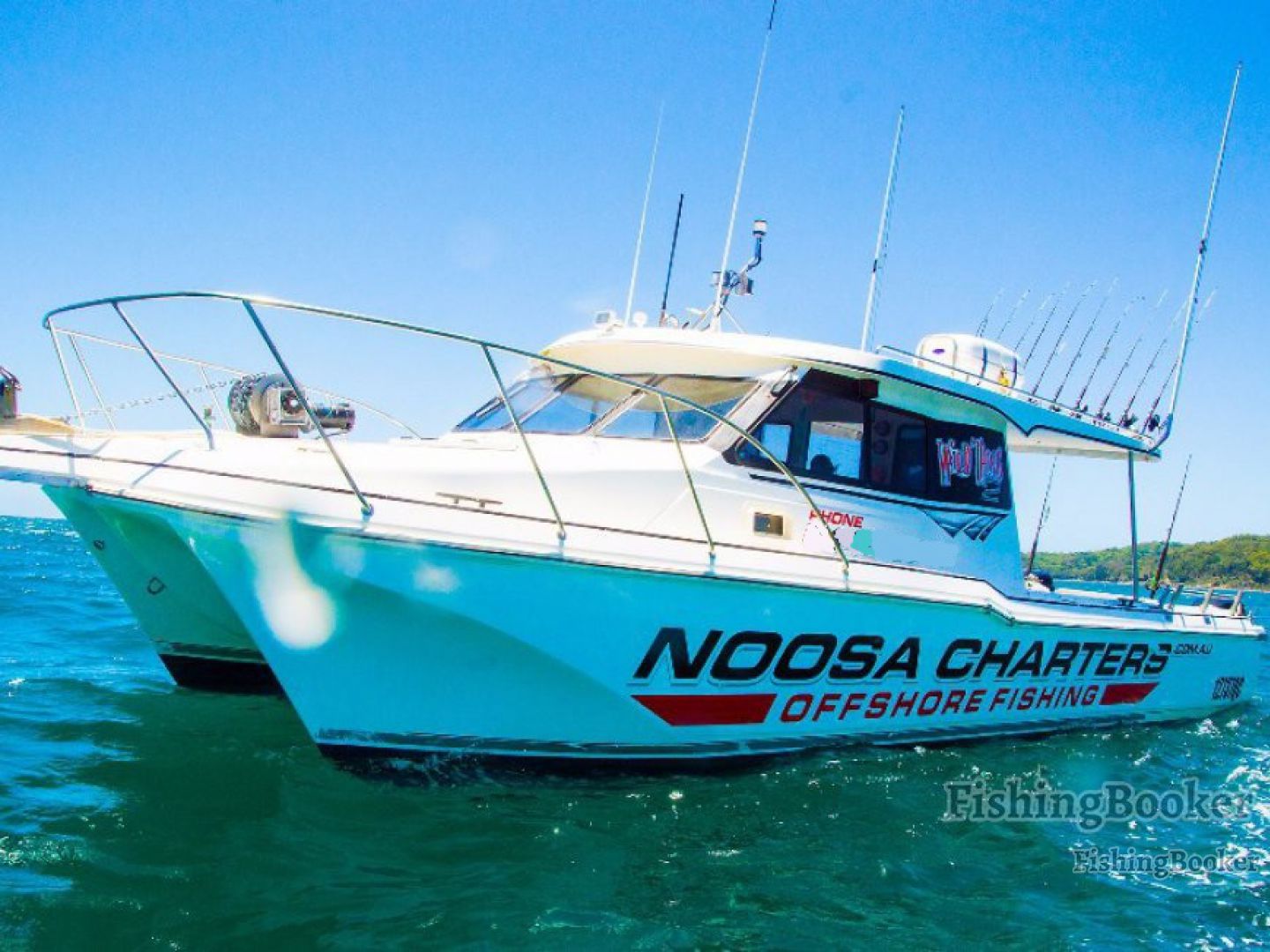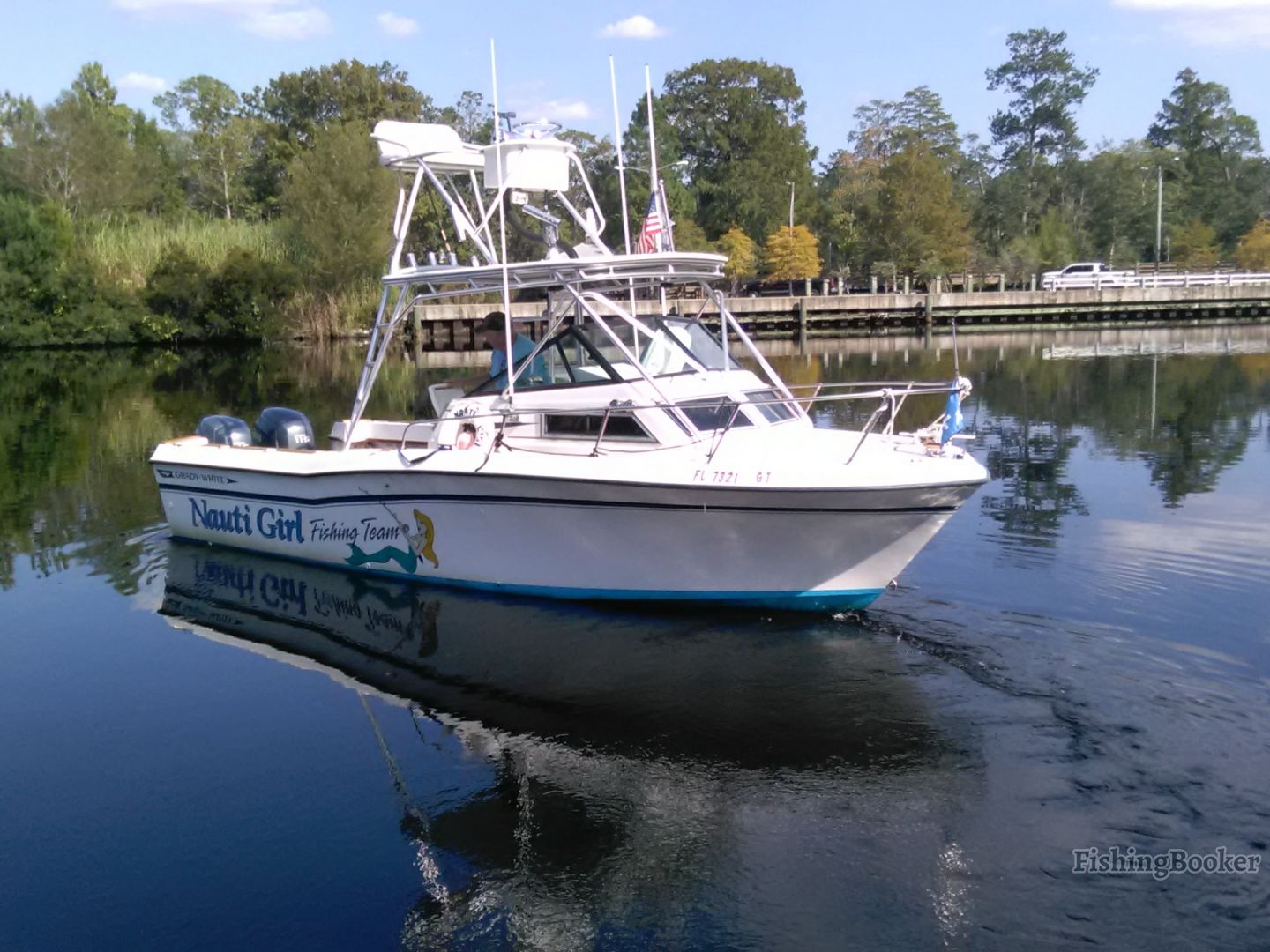Senior Citizen Easy Access Bass Boats and Accessories
Reading Time: 11 minutes
For centuries, anglers have relied on boats to reach the most productive fishing spots. Over the years, the vessels they used evolved in fascinating ways. Many different types of boats were created to navigate the distinct aquatic environments people fished in. Today, we're going to examine the most common recreational fishing boat types to give you the best idea of which one to choose for your next fishing trip.

In 2015, as many as 11.87 million recreational boating vessels were registered in the U.S. Given the country's incredible variety of fisheries, this should come as no surprise. Depending on whether they sail on lakes, flats, rivers, inshore, or offshore waters, these boats can differ pretty drastically. Where some offer functionality above all else, others are designed to offer a little more comfort.
As we examine these boats, we'll give you an overview of their basic build characteristics, the amenities they usually offer, and the kind of fishing they're best suited for. We'll throw in a few pros and cons so you can know what to expect if you choose to charter one. Sit back and enjoy.
1. Flats Boats – Skiffs
Flats boats are usually used in the shallows of the Florida Keys, or on the flats of South Carolina. Their hulls are so flat that they usually penetrate the water by just several inches. This makes flats boats indispensable for fishing in skinny waters and a great alternative to wading.

Length: Usually 15–19 feet
Capacity: Usually 2, plus the captain
Range: flats, backcountry
Expected amenities:
- Navigational equipment
- Safety equipment
- Live bait tank
- Low-powered outboard motor (often less than 100 horsepower)
- Trolling motor (sometimes)
- Shallow water anchoring system (sometimes)
- Forward casting platform (sometimes)
Features:
- Poling platform and pole (sometimes)
- Wide, flat bow for casting
- Very shallow draft
Pros:
- Can fish very shallow waters
- Usually provides a calm and quiet experience on the water
- No engine noise to scare the fish away
The flat bow offers great visibility
Cons:
- Limited storage for personal belongings
- Very sensitive to weather conditions
- Can only be used in shallow waters
- There's usually very little shade or other weather protection
2. Bay Boats

When it comes to inshore fishing, there's no beating the bay boat. Its low profile allows it to navigate through the shallows, but at the same time, its higher freeboard allows it to withstand choppier waters than a flats boat. This is why they are very popular among anglers fishing in larger bays.
Length: Usually 18-23 feet
Capacity: Usually 4, plus the captain
Range: backcountry, bays, inshore, nearshore
Expected amenities:
- Safety equipment
- Navigational equipment
- Live bait tank
- Outboard motor
- Trolling motor (sometimes)
- Shallow water anchoring system
Features:
- Higher freeboard than a flats boat (higher sides)
- Hull has a deeper vee than a skiff
- No poling platform
Pros:
- Versatile – you can easily access whichever inshore areas are producing fish at the moment
- Relatively good (as much as is possible!) in adverse weather conditions
- Has a good amount of storage, seating, and higher sides, making this an ideal option for families
- User-friendly – even if you've never been on a boat or held a rod before, you'll be able to fish from one with a guide
Cons:
- Limited scope – you can't usually go far offshore in a bay boat.
- Unable to access water as shallow as a flats boat can (bay boats don't have poling platforms).
3. Center Console Boats

Center console boats are perhaps the most versatile and user friendly of all boat types. As the name implies, the helm is located on a console in the middle of the boat. This makes for great mobility – you have excellent visibility and you're free to move around the boat with virtually no risk of getting your fishing lines tangled. What's more, many center consoles include a "head" (onboard toilet), catering to your comfort more than other boats of similar size. Center consoles come in a wide range of sizes – anywhere from 18 to 40 feet!
Length: 18–40 feet
Capacity: 4–6 (depending on the size of the boat), plus the captain
Range: inshore, nearshore, offshore
Expected amenities:
- Navigational equipment
- Safety equipment
- Live bait tank
- Outboard motor (up to 4)
- Trolling motor (sometimes)
- Shallow water anchoring system (sometimes)
- "Head" (Toilet) inside the console (sometimes)
- Outriggers (sometimes)
- Downriggers (sometimes)
Features:
- T-top for shade (sometimes)
- Tarpon/Cobia tower (sometimes)
Pros:
- Having the controls in the middle means you can walk all the way around the edge of the boat (360° fishability). This means you can follow your fish as it moves around the boat, making fishing more effective – you're less likely to break your line or get tangled
- They are cheaper to run (and charter) than bulkier offshore boats
- Depending on the boat, you can usually have a great deal of flexibility, being able to fish inshore or offshore according to the weather and what you want to do
Cons:
- Fewer home comforts than larger boats. There may or may not be a toilet. If there is, it will be inside the console. On smaller boats, this can be inaccessible to larger guests. However, it can be invaluable when looking for a good inshore/nearshore charter with kids
- There's usually very little shade (limited to a T-top if anything) and no air conditioning or other weather protection
4. Catamarans

Catamarans have two hulls and are usually used for offshore fishing. The two hulls provide greater stability in choppy weather conditions, and more fuel efficiency compared to regular mono-hulled vessels.
Length: Usually 25–60 feet
Capacity: Anywhere between 6 and 50
Range: Nearshore, offshore
Expected amenities:
- Navigational equipment
- Safety equipment
- Live bait tank
- Head (Toilet)
- Outriggers (sometimes)
- Downriggers (sometimes)
- Rod holders
- Small kitchen
- Sleeping area (sometimes)
Features:
- Twin hulls of the same shape and size
- Plenty of room
- Interior seating and resting area
Pros:
- More stable than most other boats.
- Aerodynamic, meaning they require less power, which translates to lower fuel costs (and charter prices)
- Can be very comfortable and luxurious
Cons:
- Slower than some other designs
5. Kayaks

Kayaks are fishing vessels for one angler (and in rare cases two), used for fishing in rivers, flats, and backwaters. Due to the relatively small size of the kayaks, groups of anglers can easily transport and maneuver them through the narrow and shallow waterways. Since they come without a motor in most cases, kayaks require some basic physical fitness to operate. Kayaks are sometimes even used for offshore big game fishing!
Length: Usually 12–14 feet
Capacity: 1 (very rarely 2 in a specially designed kayak)
Range: flats, backcountry, inshore, nearshore, and offshore (sometimes)
Amenities:
- Rod holders
- Occasionally a trolling motor and/or a shallow water anchoring system
Pros:
- Kayaks are small, light, and quiet. This means they can access narrow, shallow waterways that other boats can't reach. This makes them perfect for fishing flats and mangroves
- They are very easy to transport and can even be taken on a center console to remote fishing locations
Cons:
- There's more manual work required than usual. Unless you have a motor on the kayak, you need to paddle yourself around in addition to casting your line. The keyword here is stamina!
- Not ideal for complete beginners. Even with an experienced guide in the kayak next to you, you'll be on your own in the boat, juggling gear, paddles, and fish. Those who choose to venture offshore in a kayak should head out in groups and consider all safety precautions
- Very little storage for belongings
Drift boats are similar to kayaks, however, they can carry more people, and have some additional comfort and technology that kayaks generally lack (i.e. heating).
6. Inflatable Boats

Inflatable boats are perfect for navigating freshwater rapids. These are the boats you usually think of when you think of rafting. They will help you overcome turbulent rivers like no other fishing vessel, but don't expect to come out dry after your ride is over.
Length: 15–25 feet
Capacity: 2–6, plus the captain
Range: Rivers
Expected amenities:
Could be anything from a raft to a proper sportfishing boat with a Bimini shade and bait tank
Pros:
- Good at handling rough water
- Easy to transport to the best fishing location
Has some room for your belongings
Cons:
- You and your stuff will probably get wet
- A bumpy ride
There are sturdier versions of inflatables – rigid inflatable boats. These boats have a fiberglass or aluminum hull to go with an inflatable outer body. They are bigger, faster, and can carry more weight than regular inflatable boats.
7. Bass Boats

Anglers typically use bass boats in freshwater, and, as the name suggests, usually when Bass fishing. They come with a lower freeboard, and a vee hull with an open bow. More often than not, bass boats are equipped with high-tech navigation, a powerful outboard motor, and comfortable seats. This all adds up to a fairly steeper price compared to other freshwater fishing boats.
Length: About 16–22 feet
Capacity: 2–4, including the captain
Range: Lakes, inshore
Expected amenities:
- Navigational equipment
- Safety equipment
- Live bait tank
- Outboard motor
- Trolling motor
- Shallow water anchoring system
- Fishing seat (common)
Features:
- Comfortable chairs
- All you need for fishing (usually these boats are high-tech)
- Very large open bow to cast from
Pros:
- The ultimate fishing machine for freshwater
- Comfortable seating
- Fast
Cons:
- Can only take smaller groups
- More expensive than the alternatives
8. Pontoon Boats

Pontoon boats weren't originally meant for fishing, however, thanks to the ample comfort and safety they provided, they became a favorite fishing boat for families and the elderly. These steady cruising vessels have large decks, high rails on each side, and usually come with an expandable Bimini.
Length: Anything from about 25 feet
Capacity: 6+ (usually licensing is the limiting factor)
Range: Inshore, nearshore
Expected amenities:
- Rod holders
- Navigational electronics
- Safety equipment
- Live bait tank
- Outboard motor
Bimini shade canopy (usually)
Features:
- Comfortable seating
- High sides
- Plenty of room
Pros:
- Very stable
- Very secure
- Comfortable – lots of room for seating, shade, storage… you name it
- They usually have a low draft, allowing them to access skinny water
Cons:
- Usually not regarded as a 'serious' fishing boat (although some people might beg to differ)
- Not the most maneuverable boat
- Typically not very fast
- They won't get you very far from the shore
9. Air Boats

Air boats are an iconic American fishing vessel, especially in the South. If you want a big, mean, loud fishing experience, book an airboat. These unusual-looking boats will get you across anything from shallow waters to wet grasslands. They're fun, entertaining, and it's possible to fish from them, but are not usually considered to be technical fishing machines.
Length: 12–18 feet
Capacity: Usually up to 4, plus the captain
Range: Backwater, Inshore
Expected amenities:
- Fishfinder
- Ice box
- Trolling motor (occasionally)
- Rod holders
Features:
- The biggest baddest engine you'll find on a fishing boat
- A flat bow for fishing
- Raised, comfortable chairs
Pros:
- Able to traverse incredibly shallow water and swamps, even if they're full of weeds
- Almost unique to the southern states of the US. A good opportunity to get to backcountry areas and experience the way people live there
- Good for bowfishing and gigging due to its ability to get to shallow waters and the ample room for lights on the deck
Cons:
- High seats aren't easy to access for older passengers
- Kids must be very highly supervised
- The ride can be bumpy – you need to be relatively physically fit and able to hold on!
- They're difficult to drive – the guide must be experienced so you don't get stuck!
10. Cuddy Cabin Boats

You can think of the cuddy cabin boat as a center console with an enclosed cabin area in the front. The cabin usually comes with some basic living amenities, such as a small kitchen and a sleeping area. A cuddy cabin with an accessible bow is called a walk-around.
Length: 18–28 feet
Capacity: 4–6, plus the captain
Range: Offshore
Expected amenities:
- Rod holders
- Navigational electronics
- Safety equipment
- Live bait tank
- Head (usually)
- V-berth sleeping area
- Small kitchen (usually)
- Outriggers, fighting chair, downriggers (sometimes)
Features:
- Similar to a walkaround boat, it has an enclosed area for bad weather, a more developed toilet than a center console, etc.
Pros:
- Shade, weather protection is usually available
- You have more living amenities than a center console
Cons:
- You can't always move all the way around the boat
11. Pilothouse Boats

Pilothouses are similar to cuddy cabins in that they offer an enclosed cabin in the front. However, a pilothouse usually doesn't have a living area and doesn't generally offer the same comfort level. The cabin on this boat type offers a proper toilet, a good amount of storage space, and weather protection.
Length: 20–35 ft
Capacity: 4–6, plus the captain
Range: Nearshore, Offshore
Expected amenities:
- Rod holders
- Navigational electronics
- Safety equipment
- Live bait tank
- Inboard or outboard motor
- Proper head (usually)
- Seating area and a berth
Features:
- Covered area for shade and weather protection
Pros:
- Usually has a proper toilet
- Plenty of covered space for weather protection
Cons:
- Not as great for performance fishing as a center console or a walkaround, since the pilothouse can get in the way
- Can experience a bumpier ride than some other boat types because of the amount of weight right at the front of the boat
There's a variation of the pilothouse boat called a "downeast." Downeast boats were developed specifically for the rough waters of the Maine coastline (the name refers to this geographical region). They were primarily used for lobstering, but their use has now expanded to other types of fishing.
They comes with the same layout and amenities as the pilothouse, but with one difference in design. The typical shape of the hull is designed to cut through rough waves rather than ride over them. Unlike other boat styles, they don't pound over the waves, but offer a comfortable ride in rough conditions. The downeast type is not the fastest of boats, but they will keep you safe during nasty weather conditions.
12. Flybridge Sportfishing Boats

When you think of an offshore sportfishing boat, you probably have a picture of a flybridge sport fisher in your mind. These vessels are perfectly suited for extended fishing trips. Sportfishers boast some of the most powerful engines you can find and can get you to your offshore fishing spots in a blaze. They often have very comfortable living areas, too.
Length: 30+ feet
Capacity: 6+
Range: Offshore (more than 40 miles)
Expected amenities:
- Rod holders
- Navigational electronics
- Safety equipment
- Live bait tank
- Outriggers
- Downriggers, centerrigger (optional)
- Usually an inboard engine
- Tuna/Marlin tower (optional)
- Berths, galley, and head.
- Fighting chair (usually)
Features:
- Interior seating and resting area
Pros:
- The best boat for serious big game fishing
- Comfortable living amenities for longer trips
Cons:
- Less easy to move around than a big center console set up for the same job
- More expensive than other boats
13. Convertible Boats

When it comes to top-notch sportfishing, convertibles reign supreme. With powerful engines and spacious living areas, these vessels are the perfect choice for multi-day trips. Convertibles are highly customizable boats, and can be anything from luxury cruise vessels to serious sportfishing crafts (and anything in between).
Length: 30+ feet
Capacity: 6+
Range: Offshore (more than 40 miles)
Expected amenities:
- Rod holders
- Navigational electronics
- Safety equipment
- Live bait tank
- Outriggers
- Downriggers, centerrigger (optional)
- Usually an inboard engine
- Tuna/Marlin tower (optional)
- Berths, galley, and head.
- Fighting chair (usually)
- Flybridge (usually)
Features:
- Excellent interior amenities – as good for cruising as it is for fishing
Pros:
- The living areas are as good as the fishing
Cons:
- Some top-level fishing features may be compromised in favor of luxury living areas
So, there you have it. All of the recreational fishing boat types we mentioned have an advantage (or two). Some will squeeze you into a fishing spot no other boat can reach, others will get you to the fishing grounds in a blitz, and some will keep you safe better than any other. Whatever the case may be, we hope that this makes the choice for your next fishing trip at least a little easier.
Your turn. Have you ever fished on one of these boat types? Which boat type would you like to try next? Let us know in the comments below.
barnessisturionse.blogspot.com
Source: https://fishingbooker.com/blog/recreational-fishing-boat-types-explained/
0 Response to "Senior Citizen Easy Access Bass Boats and Accessories"
Post a Comment